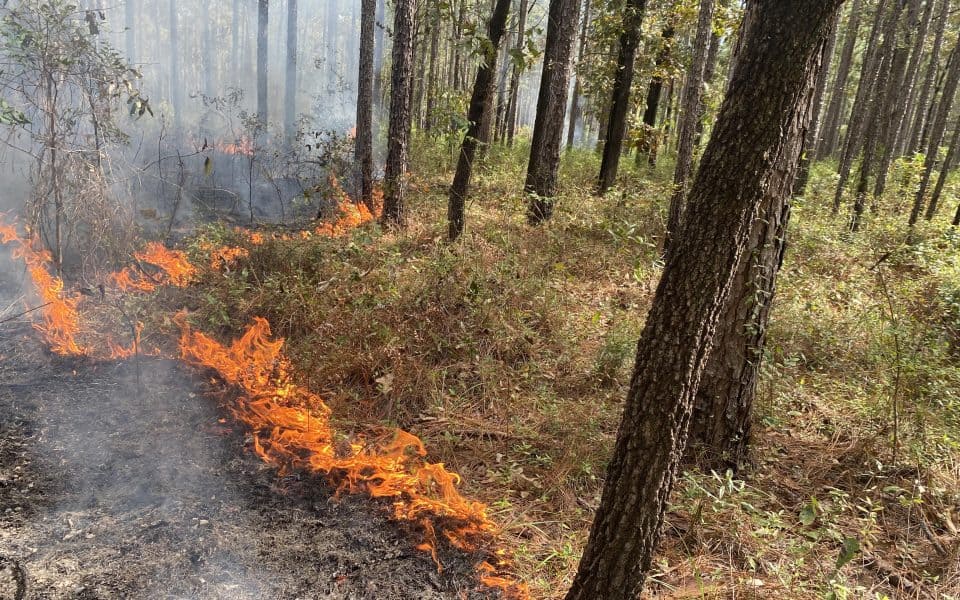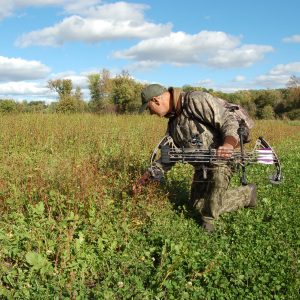Do we need to do more late growing season burns?
DISCLAIMER: DO NOT attempt a controlled burn without proper training and supervision!
As a student of the game, I am always picking the brains of those I know who are foresters or wildlife biologists on how we can better manage our timber and wildlife. A conversation with my good friend Will Dixon, a forester for Larson & McGowin Forestry Consultants in Lower Alabama, turned me on to the concept of a late season prescribed burns as a means for setting back undesirable woody stem encroachment in pine plantations. By woody stem, (in our region) we mean sweetgum, gallberry, yaupon, and anything that would choke out the understory and make it more difficult for wildlife to utilize.
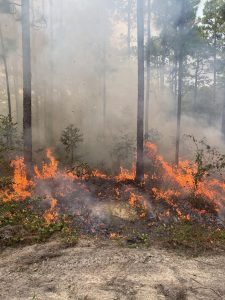 According to Will, whose company burns thousands of acres annually, he discovered the method by accident…literally. A site prep burn, in which a clearcut area was being prepped for pine seedling planting the following winter, jumped the fire line, and as a result, the fire started creeping through a mature pine stand that featured a heavy gallberry and sweetgum understory. The crew quickly put a firebreak around the section, but allowed the burn to continue creeping through the stand. Short-term and long-term observation would show the burn was highly effective in re-setting the understory, and Will found a new favorite time of the year to burn.
According to Will, whose company burns thousands of acres annually, he discovered the method by accident…literally. A site prep burn, in which a clearcut area was being prepped for pine seedling planting the following winter, jumped the fire line, and as a result, the fire started creeping through a mature pine stand that featured a heavy gallberry and sweetgum understory. The crew quickly put a firebreak around the section, but allowed the burn to continue creeping through the stand. Short-term and long-term observation would show the burn was highly effective in re-setting the understory, and Will found a new favorite time of the year to burn.
In the Deep South, the vast majority of prescribed fires are conducted in the dormant season, which is loosely from the first frost until the spring green-up. While certainly beneficial, these types of fires have limited impact on woody plants such as sweetgum, yaupon, and wax myrtle that have sent their nutrients into the root system. For many stands that have recently had a canopy-opening event, such as a mid-rotation thinning, the rate in which these undesirable plants take a hold of the understory is rapid.
When stands reach this point, the positive effects that the thinning and sunlight exposure had will start to diminish. The forest floor becomes impenetrable to wild turkeys due to the dense understory, forcing these and other wildlife to utilize the edges of these stands. Where this becomes extremely problematic is during nesting and brood rearing season, when hens are forced to nest and rear broods along roads and trails, which plays right into predators’ hands. You have to remember that a wild turkey hen looks at the world from about our thighs down, so you cannot blame her for choosing to nest or traverse the landscape on the edge, versus a habitat she cannot reasonably access.
While prescribed burns in general help to alleviate this concern by creating more usable space and reducing the density of the understory, sometimes the woody plant succession is so rapid that a growing season burn is needed to reset and restructure the composition of the stand.
Though percentage wise, growing season burns represent a smaller figure of the prescribed burns conducted annually, they replicate Mother Nature’s natural lightning-strike fire regime and can have advantages over dormant season burns in reducing or restructuring woody stem composition in a stand. Burning when the herbaceous plants are growing can top-kill or outright kill these problematic plants due to their thin cambium layer. Traditionally, the majority of these growing season burns have been conducted in the early part of the window-just after the plants emerge from dormancy in the month of April, but reasons exist for land managers to think beyond this window.
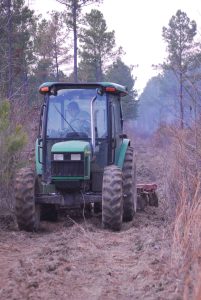 Per Dr. Marcus Lashley of the University of Florida, studies have shown that fires during the early growing season fail to control hardwoods any better than dormant season fires, only serving to temporarily set back the structure and reduce fuel in the stand. Think of this being similar to cutting the grass in your yard versus killing it with herbicide. Many of these hardwoods will root sprout and become problematic as quickly as the following growing season.
Per Dr. Marcus Lashley of the University of Florida, studies have shown that fires during the early growing season fail to control hardwoods any better than dormant season fires, only serving to temporarily set back the structure and reduce fuel in the stand. Think of this being similar to cutting the grass in your yard versus killing it with herbicide. Many of these hardwoods will root sprout and become problematic as quickly as the following growing season.
For many, the concept of growing season fire causes concern due to its earliest window being concurrent with the wild turkey breeding and nesting season. Pictures of charred turkey eggs on national forest lands have made the rounds on social media and caused great concern for passionate turkey hunters and managers. While the evidence supports that prescribed fire at any time of the year (including the nesting season) has a net positive effect, it is plausible that the size at which these fires occur could be having some localized negative impacts on turkey populations when occurring in stands where nesting could be present. Many of these burn units exceed 1,000 acres; conversely, most private landowners strive to burn in 40 and 50-acre units, meaning the statistical probability of nest mortality would not be comparing apples to apples.
So with “nesting season burns” being a no-go for many passionate gamekeepers who wish to not risk destroying even a single nest, and the long-term effectiveness of these early growing season burns being minute, what options would exist for removing undesirable woody stem vegetation from the understory? The late growing season method could be the answer.
A Different Kind of Fire
We conducted our first late growing season burn in early October of 2019. Like everything we do, we started small, breaking a larger post-thin pine plantation into smaller sections. We lit our backfires and let the fire creep through the stand at the suggestion of Will. We quickly learned that burning during the late growing season was a different animal.
In the dormant season, the stand typically has a heavy layer of duff and debris that has accumulated due to tree shedding and needle cast events. The top layer of the debris is usually the most recent needle cast, and when combined with dormant grasses and more, there tends to be a good amount of fuel in the stand.
By the time the late summer and early fall rolls around, some of that fuel either has decomposed or has turned green again. Unless extreme drought conditions exist, the forest floor itself simply doesn’t have the fuel required to create intense fires by itself. It would require dry conditions or high winds, neither of which you would want to burn on during that time due to wildfire and timber stress concerns. If you were to view examples of summer and early fall growing season burns on YouTube, you would likely see very low intensity fires creeping through the stand with less than one-foot flame lengths. They are almost boring to watch, but the results are not!
As we experienced in 2021, some years can have a dearth of moisture, meaning an already limited fuel supply is simply too wet to carry a fire through the stand. In 2021, I attempted at least five late growing season burns in which the fire went a few yards off the fire line and fizzled out. To be fair, the wind also did not reach the surface level, meaning that the fire could not push through some of the areas in which moisture was a concern. The burn I conducted mid-September was successful, and the stands’ sweetgum was reduced by >50%. So with that said, the perfect conditions are very difficult to find in the late growing season, but if they are present, excellent results can be had. You just need to be mindful of drought conditions, as the July through October window is notorious for extended periods of little to no rainfall.
Timing Prescribed Burns Matter
The key to late growing season burns lies in the timing of which they are conducted. If the burns occur after a frost, then the burn becomes a dormant season burn and it will not have had the intended effect. We have burned from mid-September to even early November because we did not have a hard frost to that point. While the kill effect was noticeable in each burn, it seemed that the earlier in the fall the better, perhaps due to more nutrients being in the topside of the tree before the root transfer process began. This would be a similar reason as to why the early part of the growing season is not as effective; when the bulk of the nutrients are in the root system, the plant is less susceptible to an outright kill due to fire exposure.
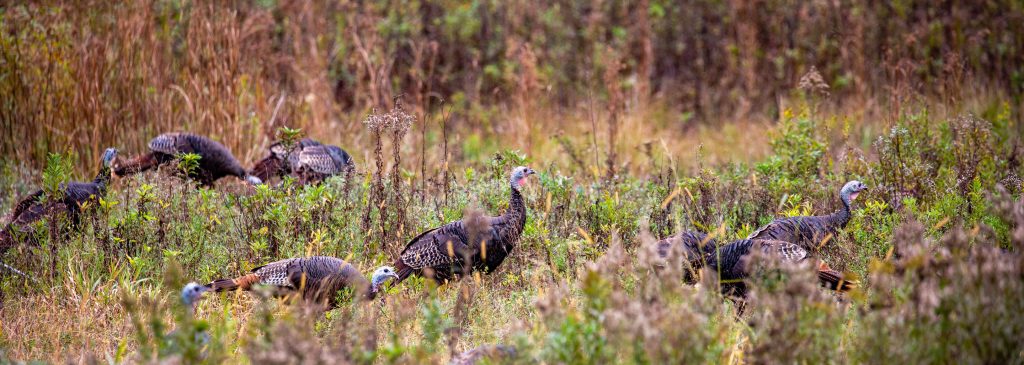
Just as strip disking in the fall tends to favor forb community emergence, burning in the late growing season tends to bring about a forb-dominated understory, which is very valuable for wild turkeys and whitetail deer.
If I were to draw out the perfect scenario, I would burn all of my “problem stands,” or those with a heavy or emerging woody stem understory, starting as early as July and ending by mid-October. In northern latitudes, you may be on a mid-June through mid-September calendar.
The key would be to find the days in which the atmospheric conditions align with the temperature and moisture of the stand. Because of the daily temperatures, all fires can cause some type of stress, especially if the summer has been drier to that point or moisture does not follow. While the risk of crown scorch would be low in most open canopy stands because the intensity of fire would not enable heat to reach the crown, you want to be careful so you don’t excessively stress trees that may already have some natural summer stress.
The perfect time would be the third day following a slight cool front in which perhaps the temperatures dip a little and some rain has kept the fuels from being too dry. You need to watch for these windows and be ready to take action when the perfect window presents itself. Keep an eye on forecasted rainfall events afterwards to minimize post-burn stress.
Strategies for Late Growing Season Burns
 As a gamekeeper, you often have to establish priorities on activities based on cost, time, and weather conditions. Managing land with fire is the same way. As alluded to earlier, every property in the Deep South has some stands that need a dose of growing season fire. Many times these areas are along the side of main roads or openings. I try to focus on the most problematic stands first; if I only get a few good burn days in this window, I want to apply my efforts to where they are most impactful.
As a gamekeeper, you often have to establish priorities on activities based on cost, time, and weather conditions. Managing land with fire is the same way. As alluded to earlier, every property in the Deep South has some stands that need a dose of growing season fire. Many times these areas are along the side of main roads or openings. I try to focus on the most problematic stands first; if I only get a few good burn days in this window, I want to apply my efforts to where they are most impactful.
Regardless of time of the year, we break our burn units down into smaller sections to help us manage fire intensity and smoke concerns, as well as allow us the ability to create more of a mosaic of altering habitats. We utilize fifth rows in the plantations to implement inner-stand firebreaks; we may have a 40-acre block broken down into as many as seven or eight smaller sections. This strategy is key especially in growing season burns because it allows you to simply backfire each section and allow the fire to creep off the line into the section. The reality is that due to the backfiring technique, you will likely be burning less acreage during a late growing season fire. Focusing on quality over quantity is advisable ― you will likely not be burning 100 or 200 acres in a day as you might during the dormant season.
As such, our desired fire intensity is different this time of year than in the dormant season. We are looking for less than two to three foot flame lengths and will rarely utilize head fires, even though I am not fully convinced a fire can get very intense during the late growing season unless drought conditions and high winds are present. If we do need to speed the fire up, we’ll utilize point-source ignition versus a strip or head fire technique.
Due to the temperatures, keeping yourself hydrated is important. Having an ATV/UTV ignition method, even if it is simply hanging the drip torch off the back while someone drives, is advisable this time of year. It will not only speed up the process, but will keep you or someone else from having heat exhaustion issues.
Closing Thoughts
As our good friend Dr. Marcus Lashley at the University of Florida has preached, finding opportunities in other parts of the burn window may very well be the key to reaching our prescribed burning goals and providing the diversity our landscapes need. There are no guarantees the dormant season will have favorable conditions, and we all have inevitable conflicts on a few good burn days, so utilizing other parts of the window may be critical. We must change our way of thinking, and sacrificing days from our favorite late summer and fall activities may be required to implement fire at this time of year.
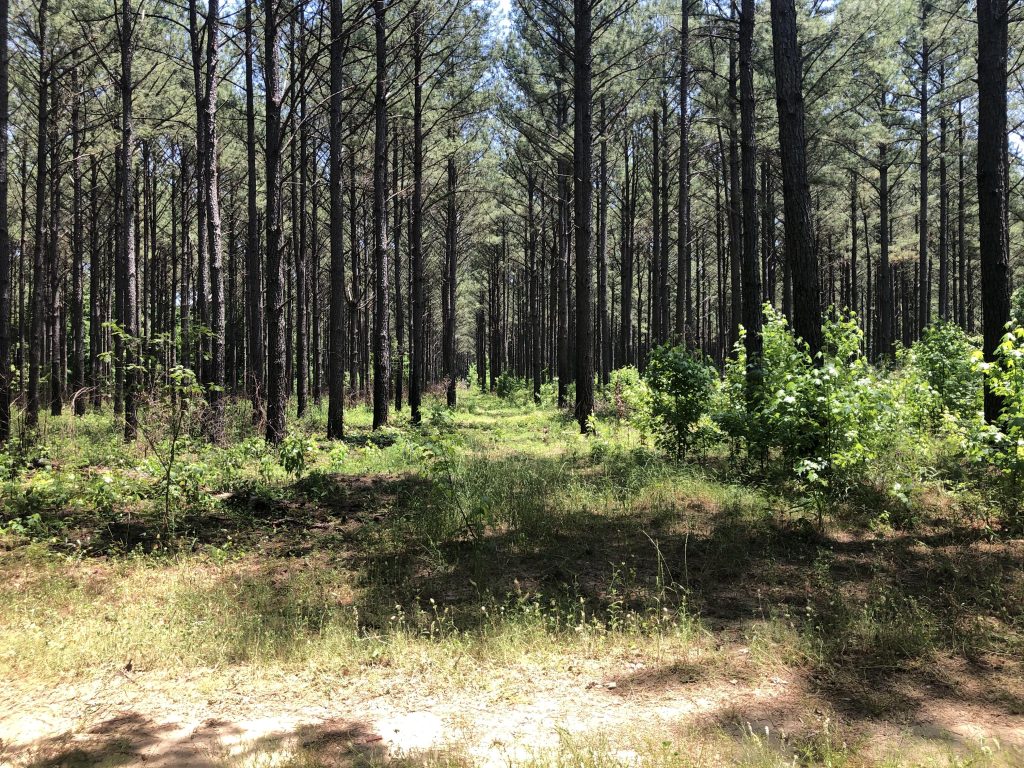
With so many of our regions’ timber stands faced with undesirable understory components, creating more usable and beneficial space for our wildlife may require a different approach than the primarily dormant season one. As a gamekeeper, we all have a responsibility to understand the tools available to us. Research late growing season burns, talk with your forester or wildlife biologist, and consider implementing it into your regime. You can certainly start small and work your way up, but based on my experience I have a high level of confidence you will see the benefits, as I did.

